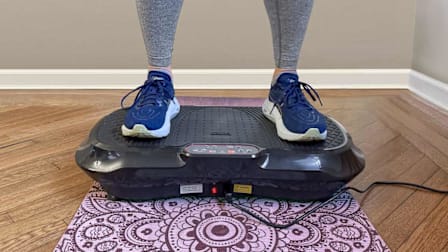Do You Really Need 10,000 Steps a Day?
That goal may not be ideal for everyone. Find the right number for you.
When you shop through retailer links on our site, we may earn affiliate commissions. 100% of the fees we collect are used to support our nonprofit mission. Learn more.

Perhaps you’ve heard that you should get 10,000 steps every day for your health. But that’s not actually a hard-and-fast rule. Research is finding that you might be able to take fewer steps as you age and still get serious benefits.
If you’re over age 60, for example, you might be able to cut a 10,000-step goal by almost half and stay healthy. "There is no single magic number," says Amanda Paluch, PhD, a physical activity researcher and assistant professor of kinesiology at the University of Massachusetts Amherst.
The Benefits of Stepping It Up
In one large analysis of the research on this question, published in 2022 in the journal Lancet Public Health, scientists found that the risk of premature death decreases as your daily step count increases. The people who walked about 5,800 steps a day, for example, had a 40 percent lower risk of premature death compared with those who took the fewest steps—about 3,600 a day.
Getting in your steps—even well below 10,000—may have other benefits, too. In another 2022 study, taking just under 4,000 daily steps was linked with a lower risk of dementia. And according to a study of 70-year-olds published in the journal BMC Public Health, those who tallied 4,500 daily steps or more had a 59 percent lower risk of diabetes than those who were less active. That decline in risk leveled off at 8,000 steps.
The risk of developing heart disease and cancer seems to follow a similar pattern, with uncertain benefits beyond about 10,000 steps. High step counts may also be associated with a lower risk for sleep apnea, reflux, depression, and obesity, according to a 2022 study in Nature Medicine.
Step Count Goals and Age
"It is likely that with each decade, you may require fewer steps per day to create a physiological response that could lead to health benefits," says Paluch.
Case in point: In the Lancet study, younger adults didn’t get substantial benefits related to mortality beyond 8,000 to 10,000 steps. But for those over the age of 60, the point of diminishing returns came at 6,000 to 8,000 steps. This may be because a certain amount of exercise, like walking a half-mile, may be more strenuous for an average 70-year-old compared with an average 40-year-old.
Create a Personal Plan
There’s no minimum number of steps you need to boost your health. "It is not an all-or-nothing situation," says Paluch. "Each increase of 1,000 to 2,000 steps can lead to health benefits, particularly for those starting at lower activity levels."
Getting an Accurate Step Count
These devices can help you count your steps. Members can also see our full ratings of fitness trackers and smartwatches.
Editor’s Note: A version of this article also appeared in the March 2023 issue of Consumer Reports On Health.




















